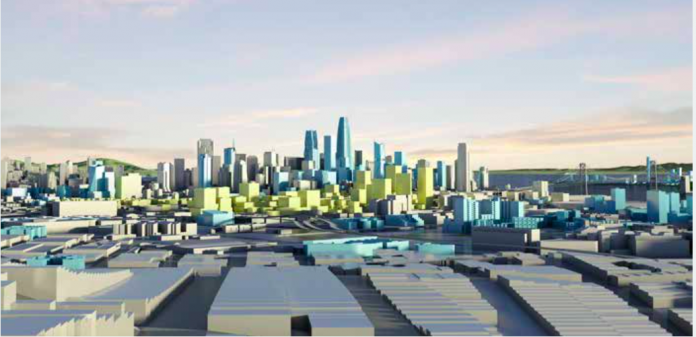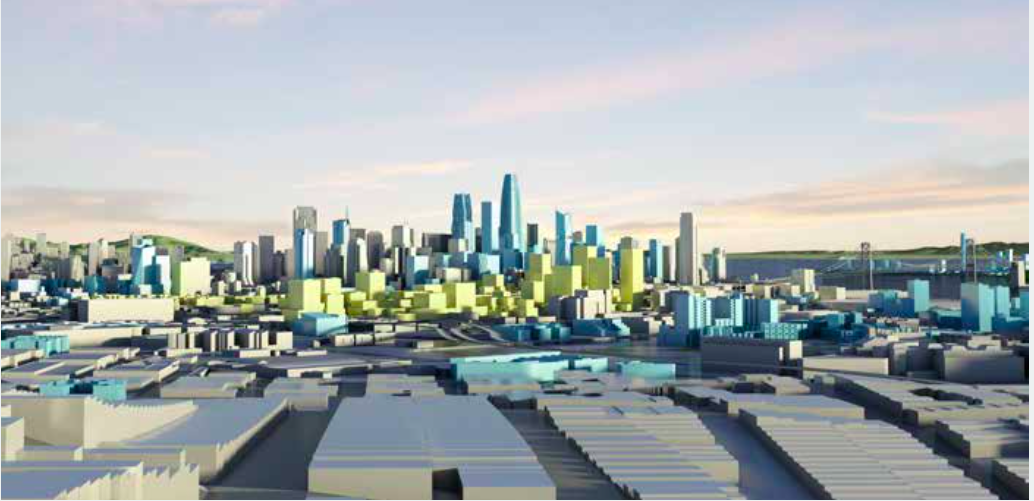
The Central Soma Plan, more than ten years in the making, got a mixed reception at the Land Use and Transportation Committee meeting today, with some community groups saying the plan will lead to displacement.
Sup. Jane Kim, who is the sponsor of the legislation, moved today to add significantly more space for housing development. And she and city planners made clear that the plan’s mandate for 33 percent affordable housing, and close to a billion dollars in community benefits for even more affordable housing, was historic and extraordinary.

But the debate made clear a big problem with this plan – similar to the problems we faced and still face with the Eastern Neighborhoods Plan: Work on rezoning central Soma started before the tech boom, when city officials were looking to create jobs in a bad economy. The plan emphasized office space – and, critically, preserving production, distribution and repair as well as retail jobs.
Work on the Environmental Impact Report for the plan began in 2013, before Uber and Lyft and the Google buses and tech displacement were dominating local land-use politics. The report was completed in 2016 – and analyzed alternatives that included a maximum of about 8,300 housing units.
So now the supes can’t add zoning that would include more than 8,300 housing units without blowing up the EIR and starting again – a process that could take at least another two years.
With the Eastern Neighborhoods, the EIR analyzed a level of housing and development that has already been exceeded. John Rahaim, the planning director, freely admitted today that “we did not anticipate the pace of change.”
The idea that the city can do a single EIR for a large swath of land, and expect that it will address the impacts of every project for the next ten or more years, is looking more and more dubious to me. The economy is moving to fast; the city is being transformed at a radical pace. What made sense five years ago makes no sense at all today.
Several community groups, including SOMCAN and the Yerba Buena Neighborhood Consortium, are appealing the EIR, and that will come before the supes Tuesday.
If the board rejects the EIR, then there’s a chance that the process could start again, with a different understanding of what’s going on in the neighborhood.
David Woo, representing SOMCAN, told the supes that “this is a plan and a recipe for displacement.” Rezoing land in a way that raises its value leads to speculation, he said.
Jeantelle Laberinto, also representing SOMCAN, said that the plan will lead to displacement of existing residents, who will then have to move far out of town, and commute to their jobs in the city – creating negative environmental impacts.
Kim said today that she’s looking at anti-displacement legislation.
Peter Cohen, co-director of the Council of Community Housing Organizations, said that his group’s analysis of the jobs-housing fit shows that Central Soma needs 56 percent affordable housing to meet the needs of the new employees.
John Elberling, director of Todco, said the affordable housing rules are “far short of getting it done.” He went farther: He said that the city needs to be willing to use its power of eminent domain to seize property that could be used as affordable housing.
“The Chronicle Hotel on Mission Street has been vacant for 20 years, and the slumlord owner has refused to sell to anyone,” Elberling said.
“The Ellis Act is out of control,” he said, arguing that the city should condemn and take over any property where there’s an Ellis eviction.
Yeah, he said, that’s “the nuclear option” – but the city’s running out of space and time.


